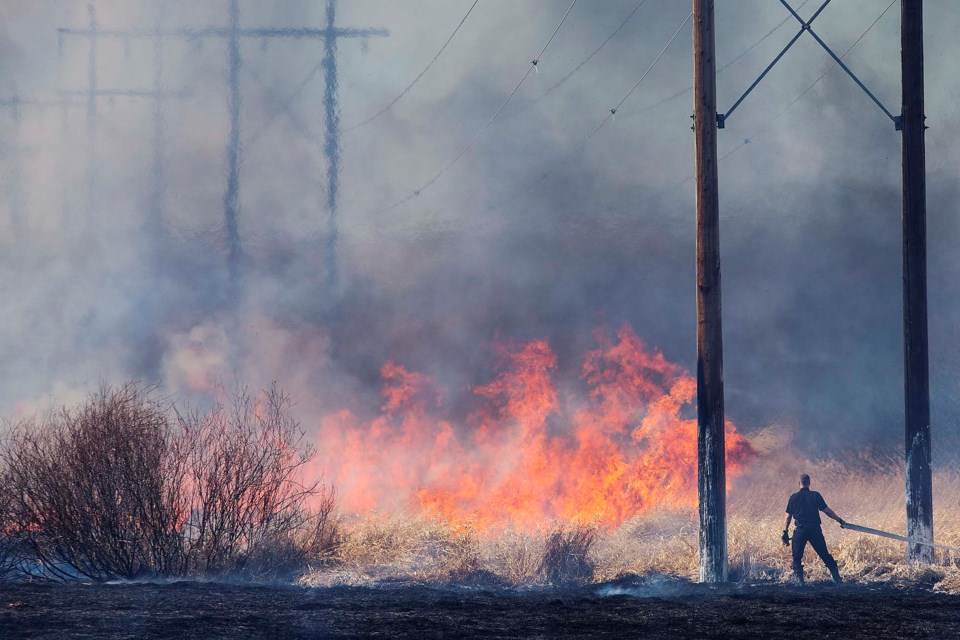St. Albert will face more floods, bigger fires and longer droughts in days ahead under global heating, a new federal report suggests, and those disasters could make this city's tall trees a thing of the past.
Natural Resources Canada released the Prairie provinces chapter of its Canada in a Changing Climate report Dec. 7. The report, set to be published in chunks throughout 2021, looks at the vulnerabilities, risks and challenges global heating presents to this country, and how we might adapt to it.
The Prairies contain a third of Canada’s land, its third-largest economy (Alberta) and its fourth and fifth most populous cities (Calgary and Edmonton), the report said. It has also seen the strongest warming to date across southern Canada, and suffered six of the 10 costliest natural disasters in this nation’s history, all of which happened in the last 10 years. Those disasters included events such as the 2016 Fort McMurray wildfire, which incinerated neighbourhoods, forced some 90,000 people to flee their homes and smothered St. Albert with smoke.
“There’s good scientific evidence to indicate that in a warmer climate, these (extreme weather) events will be even more damaging,” noted lead author David Sauchyn of the Prairie Adaptation Research Collaborative at the University of Regina.
More heat means heavier rainfall events and greater chance for floods, such as the ones that soaked Calgary in 2013, the report found. It also means a longer fire season, more dry fuel and more lightning strikes. Research on the Fort McMurray fire has found climate warming has made such massive infernos 1.5 to 6 times more likely to happen in Alberta.
“The worst-case scenario for the Prairies is a drought,” Sauchyn said.
The report found that the Prairies in general would be at “high to extreme” risk of drought by 2050 due to climate warming, up from merely “high” today. Sauchyn said Alberta has had long, expensive droughts in the recent past – the 2001-2002 one effectively zeroed out Alberta’s agricultural income – and should expect more severe ones this century.
Consequences and countermeasures
These climate changes would shift St. Albert from its current forest-dominated landscape to one more like the grasslands around Calgary by 2050. As trees die from fire, drought or wind, they won’t necessarily come back and the forests will gradually retreat north, Sauchyn explained. In addition to protecting the trees we have now, this means St. Albert may want to look at transplanting seeds or trees from here further north so they survive, and to bring in drought-tolerant species from southern Alberta.
Alberta farmers might benefit from a longer growing season under climate warming, with spring wheat set to become up to 37 per cent more productive by mid-century under some scenarios, the report found.
But farmers will have to adapt to the negatives of warming in order to realize those gains, said report co-author and University of Alberta sociologist Debra Davidson. That could mean a move to mixed farming, drought-tolerant crops and more expensive irrigation.
Communities can guard against the effects of warming, Sauchyn said. Planners can avoid building in flood plains and move at-risk communities out of them, as happened in High River, for example, while residents can put in water-absorbent landscaping to reduce flash-floods, and save water in general to mitigate drought. Edmonton recently published an extensive climate resilience strategy on how it planned to adapt to climate warming.
We can also build our community links, as those are what will support us during future disasters, Davidson continues. That can mean buying local food (which also reduces carbon emissions), checking in on vulnerable elders, and pressuring leaders to work together to address the climate challenge.
“The only way to effectively respond to climate change is collectively,” Davidson said.
The study is available at changingclimate.ca.




